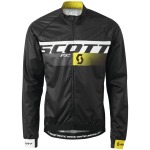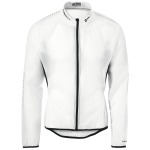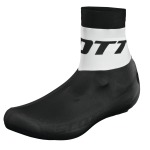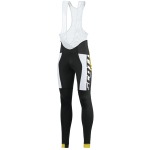December is here. The days are shorter and many of you will be feeling like hibernating! Nothing wrong with that, training should have peaks and troughs and if you don’t have them, in our opinion you just end up with a series of flat performances.
For the last few months you will have hopefully been incorporating cycling as part of your weekly routine; primarily to replace one or two of your ‘recovery’ runs. Or maybe you have been injured and you are using cycling as rehabilitation? Either way your body will be thanking you for the new stimulus, the lack of impact and the opportunity to try something new.
An article 4 we outlined winter cycling and provided some hints ‘n’ tips to allow you to cycle safely on cold and short days and we also introduced you to indoor training.
In article 5 we are going to spice up your training with two sessions – one for the road and one for indoor training.
Please remember, these sessions are in addition to your recovery cycles and are a replacement for one of your faster, more intensive run sessions.
Worried that cycling will not benefit you as a runner?
Hopping on a road bike or indoor bike provides non-impact cross training that will build your engine, maintain fitness and keep off the pounds! If you are running or cycling you will need strong lungs, a great capillary network and a strong heart. So don’t worry…
First of all, let us have a refresh.
- Maintain your long run either mid-week or at the weekend
- Maintain one quality run work out – speed, hills, tempo, fartlek or so on.
- Incorporate strength and conditioning
- Stretch post sessions, particularly hamstrings, ITB and calf’s after cycling
- Have a rest day
- Cadence – think and concentrate on 90 ‘rpm’ when cycling
- Use a heart rate monitor and/ or Gps to monitor training
Road ‘V’ Indoor
Cycling is cycling; yes? Well, yes it is BUT cycling outside in contrast to indoors provides a very different experience. It’s just like running outside in comparison to running on a treadmill.
Many of us would always choose a session outside in comparison to an indoor session, however, indoor sessions are great training sessions that allow us to ‘almost’ completely control the training situation and therefore be very specific. We embrace indoor sessions of 45-90 minutes when we are particularly working on a particular aspect of fitness. For example, you can control your heart rate, monitor your cadence, you have no traffic lights, bad weather or more importantly, danger! You can remain warm, listen to music and embrace a quality workout.
We discussed indoor bike set up in article 4; if you need a refresher, take a look HERE.
Keeping in mind this is our first ‘session’ on the bike it will be an introduction session and one that we recommend you incorporate once a week for the coming four weeks. *We do however recommend you add repetitions with each week for 4-weeks.
The Indoor Session
What you need:
- Bike
- Indoor trainer
- HRM
- Water
- Fan
- Music
- Towel
Hints ‘n’ Tips
- Make sure you have your rear tyre at 100 psi (at least) and ensure that you always inflate to the exact same pressure for every session, that way you have consistency and you can monitor progress.
- You will apply pressure to the rear tyre by adding resistance from the drum on the indoor trainer. Perform a ‘roll-down’ test each time so that you have a controlled environment. A roll down test works as follows: inflate to 100psi and then apply pressure to the back wheel using the turbo trainer. Cycle and build to a particular speed (say 15mph) and then stop pedalling. Time how long it takes the wheel to stop moving. For example, 4 seconds. Every time you train you should ideally have the same roll down time for consistency and monitoring. If it takes 5 seconds, add more resistance and vice versa.
- Use a fan to regulate temperature.
- Drink during the session – you will sweat a great deal!
- Use music and compile a play list that suits the session – no point listening to classical music if AC/DC are what you need to ramp the session up!
- A HRM is essential to control your effort and monitor progress
- Aim for 90 cadence
Warm up for 10-minutes ‘spinning’ your legs in an ‘easy’ gear. This is all about getting blood flowing, loosening stiff and/ or tight muscles and preparing for the session ahead.
Session: Perform 2 minutes at 80% of maximum heart rate (keeping cadence on or around 90) – You will need to use your cycling gears to add resistance and provide the necessary difficulty level for you elevate your heart rate. Monitor your HRM with a quality item – We use Suunto Ambit 3 Peak and Ambit 2 units
Recover for 2-minute ‘spinning’ your legs as in the warm up
Repeat the 2-minute session with 2-minute recovery for an additional 5-times (making a total of 6 in week-1). *In week 2 do 7-repetitions, in week 3 do 8-repetitions and in week 4 do 10-repetitions.
Tip – you can set your HRM/ GPS to time these intervals for you. That way you can just concentrate on the effort!
Warm down for 10-minutes spinning and then stretch
This session is a quality workout that maximises your time training and provides the necessary stimulus to make you a better, faster and more efficient runner.
The Outdoor Session
Indoor training may just not be your thing? Road riding, particularly in winter is more stressful, less predictable and carries increased risks of accident. The risks are very real, so please be sensible! Our hot tip for cycling in winter is ideally cycle between the hours of midday and 3pm – you have more light, potentially less traffic and the weather should be more predictable. For example, any early morning frosts will have disappeared providing ambient temperatures have increased.
Lets face it. A beautiful winters day, blue skies, glowing sun and a nip in the air makes you feel great to be alive.
In contrast to an indoor session, road cycling is less controllable due to many of the points already raised, so think about your ride and what you want to achieve. For our first session, we are going to work on ‘structured *fartlek’ and therefore we recommend riding out of any built up areas (use this as a warm up) and then use quiet roads for the session. Ideally the road should be flat or slightly undulating – hill sessions come later in the training!
* Fartlek, which means “speed play” in Swedish, is a training method that blends continuous training with interval training. The variable intensity and continuous nature of the exercise places stress on both the aerobic and anaerobic systems.
Warm up for at least 15-minutes, in reality though your warm up may be longer due to your location and how far away quiet roads are.
Once on quite roads build pace using progressively harder gears but still maintain 90-cadence.
Session: 1-min, 2-min, 3-min and 5-min intervals at 80-85% of max HR. Be ‘random’ with how you do these intervals and the session should last 30 to 40-minutes including recovery. Ideally you will do at least 11-minutes of fartlek and build to 22-minutes of fartlek over a 4-week period.
Recovery is based on feel and unstructured, Use heart rate as a guide here. For example, when your heart rate drops back down to 70-75% of max HR – perform another repeat/ interval.
Warm down is as warm up – use cycling home in an easy gear and make sure you stretch post ride.
Incorporate one or both of the above sessions in over a 4-week period and you will start to feel the benefits not only physically and mentally.
In the New Year we will take our sessions up a notch to provide you with a great kick-start for another successful year in sport.
Have a great Christmas break and a great New Year!
*****
Join us on STRAVA
Thanks to SCOTT SPORTS and SUUNTO for the support and backing
Check out SCOTT HERE
Check out SUUNTO HERE









![Suunto_logo [ConveWHITE_rted]](https://iancorless.org/wp-content/uploads/2014/10/suunto_logo.jpg?w=150&h=90)







